
Located in the southwest of Korea, Jeolla region offers visitors a new look at Korea that cannot be experienced in Seoul. From taekwondo (traditional Korean martial arts) to a rare firefly habitat forest, Muju and Wanju present a different charm of Korea.
Major transportation centers
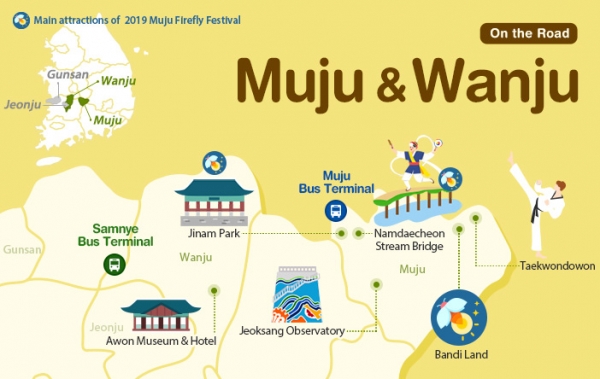
Muju Bus Terminal

The fastest way to get to Muju from Seoul is to take the intercity bus from Seoul Nambu Bus Terminal to Muju Bus Terminal, which takes approximately 2 hours and 40 minutes. The bus runs six times a day from Seoul to Muju (as of August, 2019). Depending on the destination, visitors can also take a bus to Seolcheon Bus Terminal. To get to Taekwondowon, a famous attraction in Muju, taking a local bus bound for Seolcheon from Muju Bus Terminal is recommended.
Samnye Bus Terminal
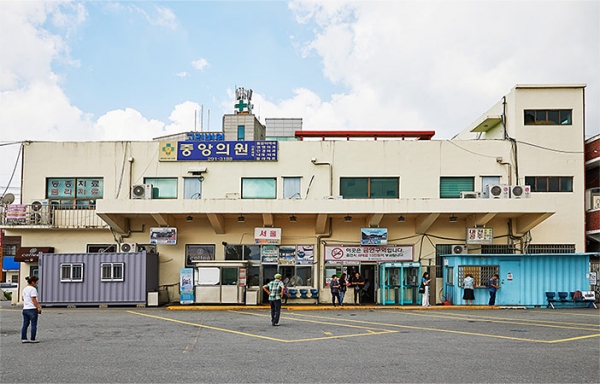
Samnye Bus Terminal provides intercity and local bus services. This two-story building has a ticket booth on the first floor and a hospital on the second floor. There is a constant flow of intercity buses from Iksan and Jeonju, while buses to Seoul Nambu Terminal run 12 times a day with the adult fare at 13,800 won (as of August, 2019.)
Recommended attractions
Taekwondowon

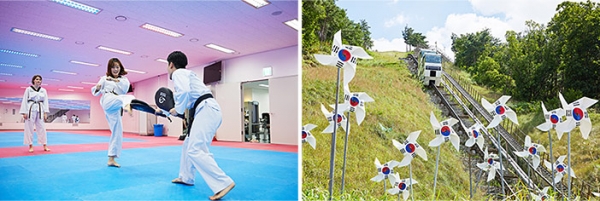
Chosen as one of the 100 Must-Visit Tourist Spots in Korea, Taekwondowon is the only center in the world dedicated strictly to taekwondo. With a large arena for taekwondo matches as well as an experience hall, training center, research center, and exchange programs, the center provides everything necessary to learn and practice taekwondo. Other facilities include National Taekwondo Museum, monorail, and an observatory on a land 10 times the size of the Seoul World Cup Stadium.
Tip) A must-visit attractions in Taekwondowon
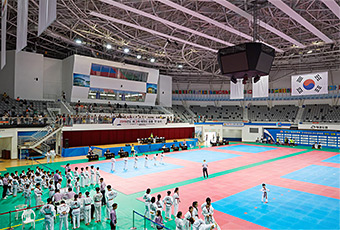
1. T1 Arena (Taekwondo arena)
The main arena’s architecture was designed with taegeuk (Korean symbol representing balance of universal forces) in mind. “Taekwon the One,” a traditional taekwondo performance, takes place twice a day and offers a free experience program for 30 minutes after the show.
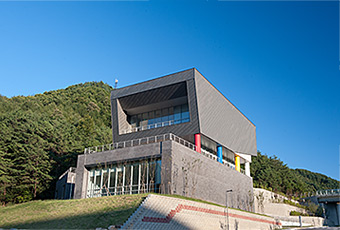
2. Yap! Experience Center
For those interested in experiencing taekwondo first hand, going to Yap! is a must. From basic taekwondo techniques and physical fitness test to VR Gyeorugi, visitors can engage in a taekwondo battle, taekwondo move experience and virtual competitions. Each program costs 2,000 won to participate.

3. Monorail and observatory
Located in the center of Taekwondowon, a three-story observatory offers a café and a deep meditation room. This is where a panoramic view of Taekwondowon and its surroundings can be enjoyed from 600 meters above sea level. Going up to the observatory does not take any effort as a monorail is available for a small fee. The monorail ride costs 2,000 won for adults and 1,000 won for children.
Jeoksang Observatory


There are many hidden attractions near Jeoksangsan Mountain in the heart of Jeoksang-myeon in Muju. Drive 15 minutes more after passing by Muju Meoru Wine Cave, a major attraction in Muju, and you will reach Jeoksang Observatory. Located across Jeoksan Lake, the observatory looks like a large water tank, but it is actually used as a power production facility for Muju Water Power Plant. To cover the clunky exterior look, a colorful design was painted to grab visitors’ attention. From the top of the observatory, visitors can see a panoramic view of Deogyusan Mountain, Muju Lake and the surrounding environment. With shades of yellow and red foliage covering the mountains, fall offers the most beautiful scenery during the year.
Awon Museum & Hotel

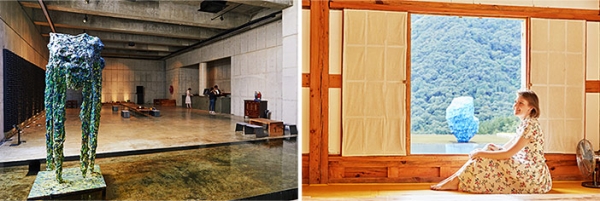
Awon Museum & Hotel consists of a 250-years-old hanok (traditional Korean house) that was removed from Jinju in Gyeongsangnam-do and reconstructed in Oseong Village. On the first floor is Museum Gallery Café, a media art center that showcases media arts and art pieces without restriction. The second floor is a traditional house that also provides accommodation services. With an emphasis on hanok, the harmony of Awon Museum’s modern interior and the accommodation's traditional architecture makes this two-story building stand out. As a beautiful facility, many visitors come to take photos in the large living room during scheduled viewing hours. Also, be sure to take a stroll around the bamboo forest trail that surrounds the accommodation facility.
Source: http://english.visitkorea.or.kr/


